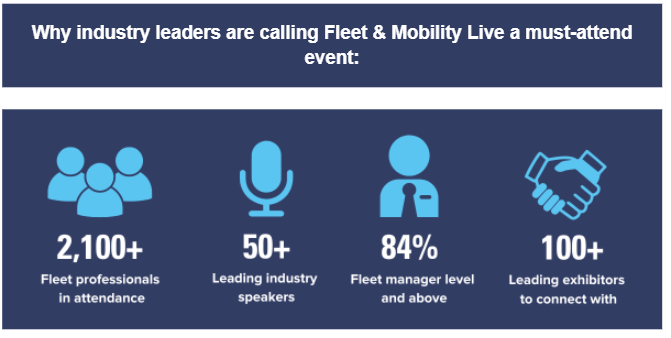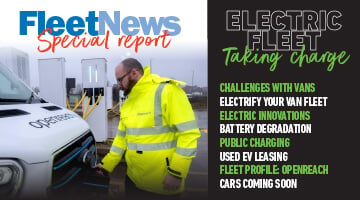By Douglas Gilmour, chartered transport planning expert at TomTom
With the average Brit spending 240 hours a year stuck in traffic, the need for smarter, more sustainable urban transport is urgent – not just for commuters, but for the fleets that support the economy and underpin trade, delivering goods and services 24/7, 365 days a year.
TomTom’s latest Traffic Index provides an annual snapshot of how people, goods, and vehicles move around, and revealed that congestion increased in 97% of UK cities last year.
For those managing fleets, congestion means spending more on fuel and driver time while making fewer deliveries every day.
For cities and road authorities, more congestion means more rapid asset deterioration, rising maintenance costs, pothole politics and struggling to stay on track with both housebuilding and emissions targets.
Ageing road networks, roadworks, lower speed limits, and changing traffic regulations – while often improving road safety – can equally compound congestion issues, reduce road capacity and increase journey times.
Roadworks, extreme weather and unplanned incidents are both more unpredictable and more costly for drivers.
Yet, change is on the horizon. The UK Government’s recent £15.6 billion investment in regional transport is a significant opportunity for local authorities to reshape urban mobility.
Measures must go beyond pouring concrete and filling potholes.
For road authorities, working smarter, not harder, means planning and communicating disruption and roadworks in advance.
It also means syndicating information to organisations whose traffic services are used in fleet planning, scheduling systems and traffic management systems and finding ever more efficient materials and processes to repair and resurface roads.
Why smarter transport matters to fleets
For fleets, working smarter means investment in not just industry-leading fleet scheduling and planning systems, but also operational and driver navigation applications exploiting real-time information.
Fleet operators, including local authorities, face growing regulatory requirements to utilise more zero-emission vehicles by 2030 (70% by 2030 under the UK’s zero emission vehicle mandate).
At TomTom, one of the ways we are helping to solve this challenge is by enabling EV routing and planning, meaning these investments in data-driven fleet planning, operational, and navigation systems translate into more efficient, reliable, and sustainable operations.
Unlocking efficiency with real-time data
Local governments can help by investing not just in road infrastructure but also in how roads are used or accessed.
Smarter planning means consultation with wider stakeholders, including local shops receiving deliveries and citizens needing access to options beside the car.
Smarter investment and operations mean identifying cost-effective, evidence-based solutions, and investing in multi-modal networks that can enable last-mile delivery services using sustainable modes.
Managing existing road networks better means moving away from traditional road sensors and cameras, which typically monitor only traffic flow and thus tell only part of the story.
Real-time, GPS-based speed and travel time data, which take into account everything from weather conditions to roadworks, gives fleet managers and local authorities a complete picture. This helps to enable dynamic route planning, adaptive traffic management strategies, and more efficient use of existing road infrastructure.
For fleet operators, they can reroute vehicles based on live conditions and respond to road closures more effectively.
Through real-time decision-making, minor disruptions can be prevented from escalating into major issues that impact customer service, fuel consumption and revenue.
The road ahead
Unlocking the potential of multi-modal networks requires bold policy decisions, strategic infrastructure investment, embracing the latest technologies and encouraging behavioural change among citizens and drivers.
Fleet managers have a unique, on-the-ground perspective that can support local governments in leading this transition.
Through local government consultations on transport planning and active input to digital services, fleet managers can actively participate in shaping policy, highlighting operational challenges and ensuring the realities of logistics, last mile delivery and essential services are fully considered, data-driven and evidence-based.
Engaging with local authorities to understand timelines and available support for incentives for cleaner vehicles can also help fleet operators stay one step ahead, particularly when it comes to regulatory change.
IMD’s Smart City Index highlights the huge impact that collaboration with local government can have on driving meaningful improvements to transportation networks.
For example, in Oslo, ranked second in its 2025 Index, investments and incentives for zero-emission vehicles have helped fleets transition to cleaner vehicles and navigate the city more efficiently. This is a pivotal step in helping the city reach its target of becoming carbon neutral by 2050.
As local governments embrace advanced technologies and multi-modal networks, fleets stand to benefit from reduced congestion, lower emissions, and improved operational efficiency.
By working together, cities and fleet operators can drive the shift to cleaner, smarter urban transport, delivering better outcomes for businesses, communities, and the environment.






















Login to comment
Comments
No comments have been made yet.